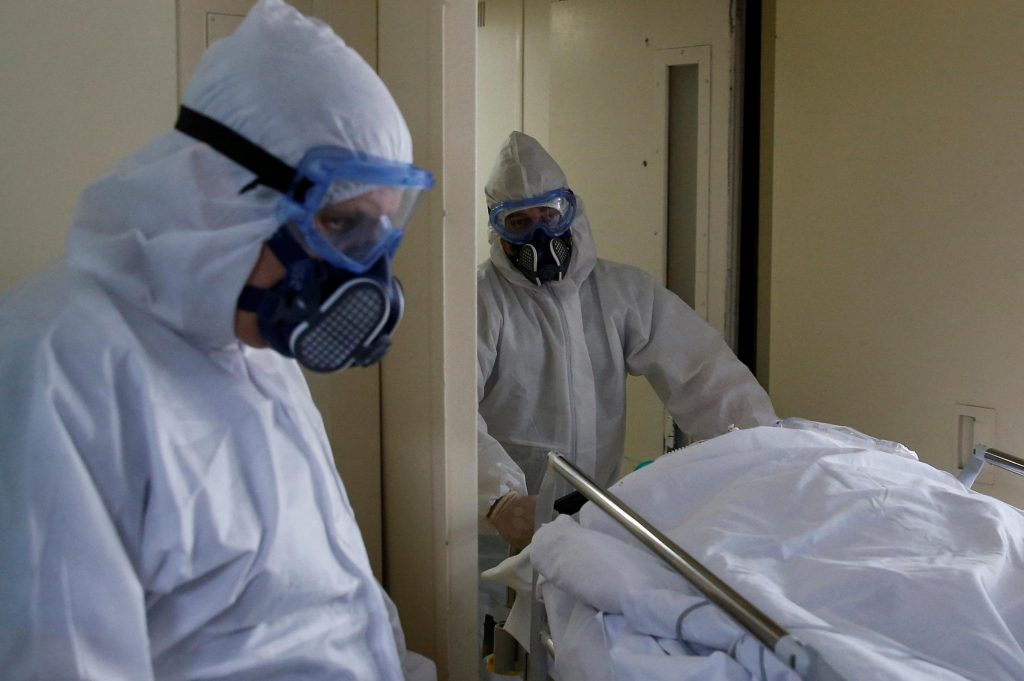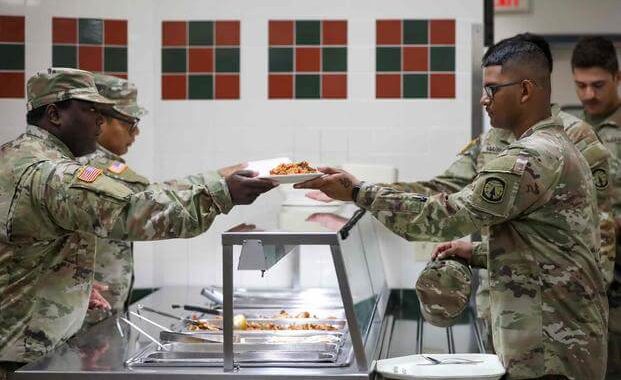Moscow Doctor sees Echoes of War in Coronavirus Battle
3 min read
MOSCOW (Reuters) – When patients who can hardly breathe fill the wards of Moscow Hospital Number 52, Mikhail Ketskalo recalls the suffering he witnessed as a military doctor at war.
Hospital Number 52 is one of dozens of Moscow clinics that have stopped taking regular patients to focus solely on treating people with the novel coronavirus and pneumonia.
Ketskalo works in an intensive care unit with over 100 patients which he says is functioning at 110%-120% of its maximum capacity.
“It looks like a massive influx of wounded people (from a war),” Ketskalo said, sitting at his desk at the end of a busy working day.
Recalling his days as a military doctor during a war between Russia and the region of Chechnya, he said: “I’ve been in this situation before, when a (Russian) assault on (the Chechen capital) Grozny began in December 1999. It was about the same.”
Russia has reported more than 100,000 coronavirus cases, with over 1,000 deaths.
Dozens of patients were receiving treatment in intensive care wards at Hospital Number 52 on Tuesday, said a Reuters photographer who visited the clinic.
No beds appeared to be available and five or six ambulances usually queue in front of the hospital reception during the day to deliver new patients.
Ketskalo is in charge of a unit that offers life support using an ECMO, a machine that oxygenates the red blood cells, a last resort for those whose condition is so serious that an artificial lung ventilator would not help.
Several patients with pale faces, their eyes closed, lay motionless beside ECMO machines. Only beeping monitors showed they were alive.
Only one in two patients survives after completing the procedure, said Ketskalo.
“If we did not put them on ECMO, more people would probably die,” he said. As of Wednesday, the last death in his unit was registered four days ago.
“I’ve been working as a critical care physician for a long time and have taken part in combat,” Ketskalo said. “I can’t say we get close with patients but we are well disposed towards them and it is always painful when they die, especially when they are young.”
POST-VENTILATOR SELFIE
Sometimes there are victories.
Ketskalo recalls a 26-year-old patient who was infected while abroad in Italy and transferred by car to Moscow from Nizhny Novgorod, 400 km (250 miles) east of the capital. He was in a severe condition with 75% of his lungs damaged and not functioning.
“We managed to drag him out of it, to take him off a ventilator. He lost 20 kilograms (44 lb), but he walked out on his own two feet,” Ketskalo said.
When patients wake up after lung ventilation they sometimes ask doctors to take pictures of them to send to relatives, he said. Medics do not mind helping them.
Ketskalo said he works 12-14 hour shifts and has not had any weekends off since the end of February.
When his hospital was receiving its first coronavirus patients, a 44-year-old nurse in his intensive care unit contracted the virus and developed severe symptoms. She was put on a ventilator in the same unit and recovered only recently.
Seeing colleagues in intensive care is one of the worst experiences, said Ketskalo.
“God forbid anyone close to you should lie there, anyone whom you knew before… It’s very difficult to handle mentally,” he said.
by Maxim Shemetov and Maria Tsvetkova





